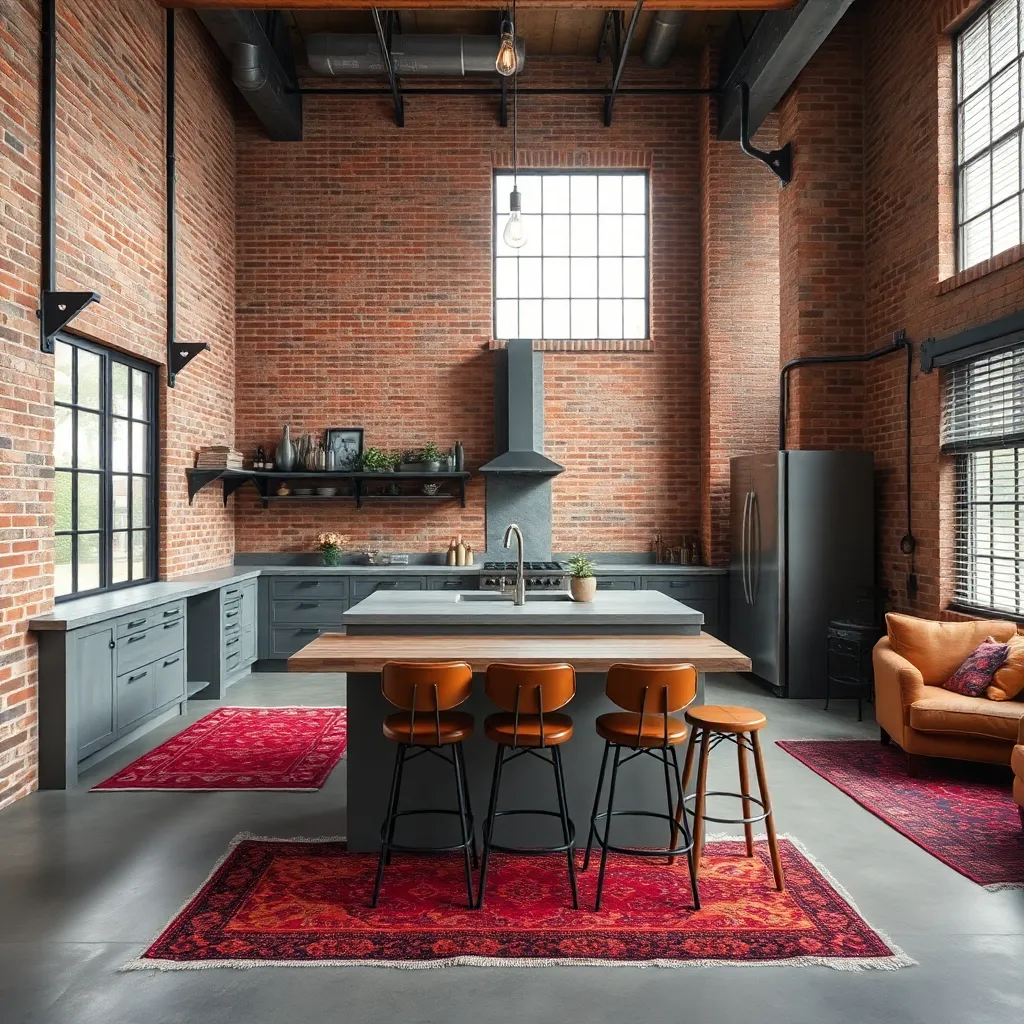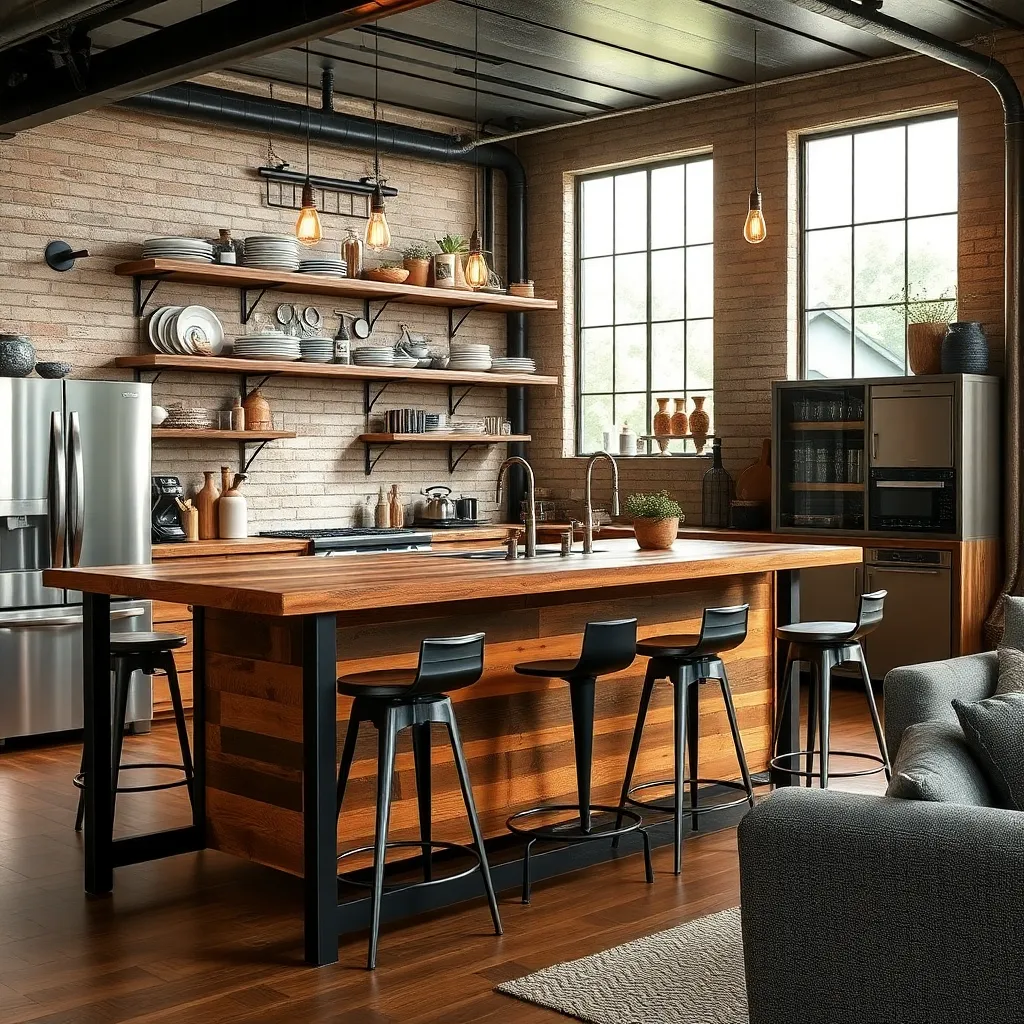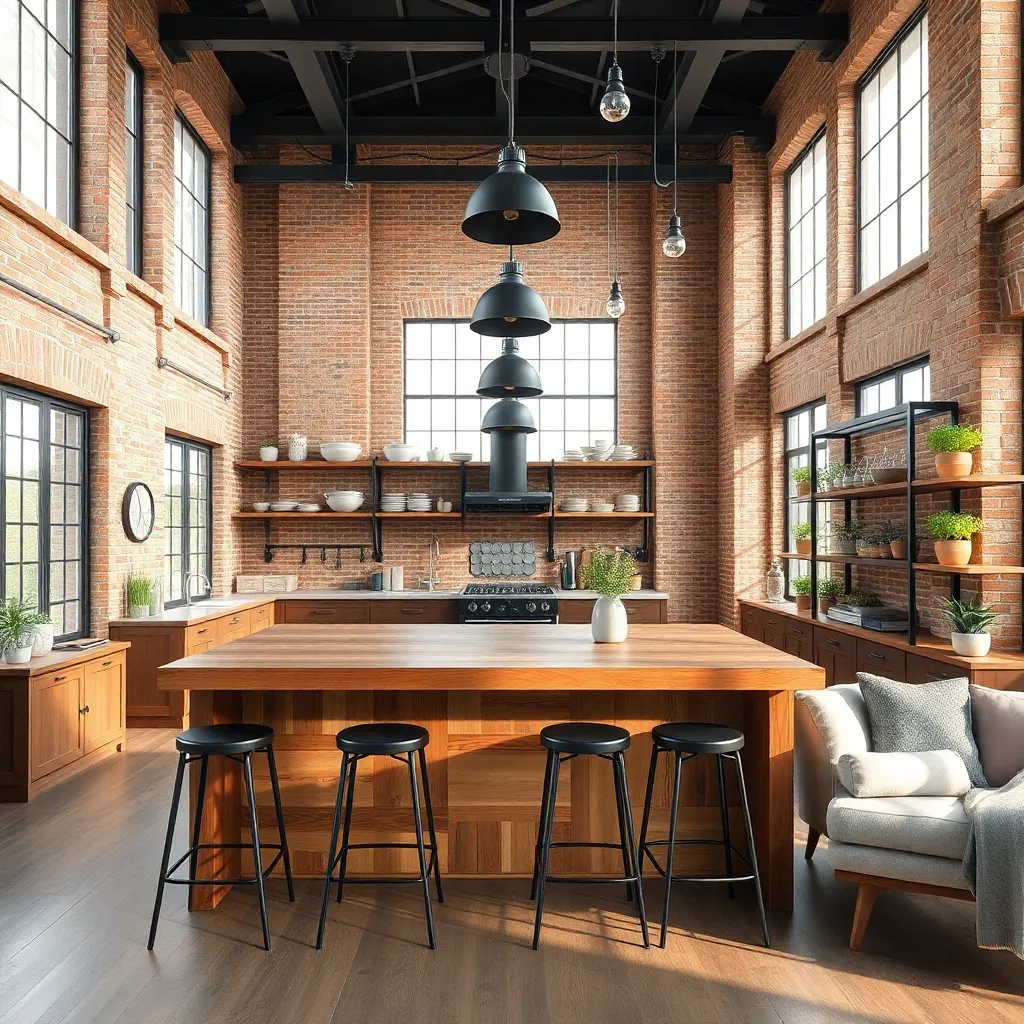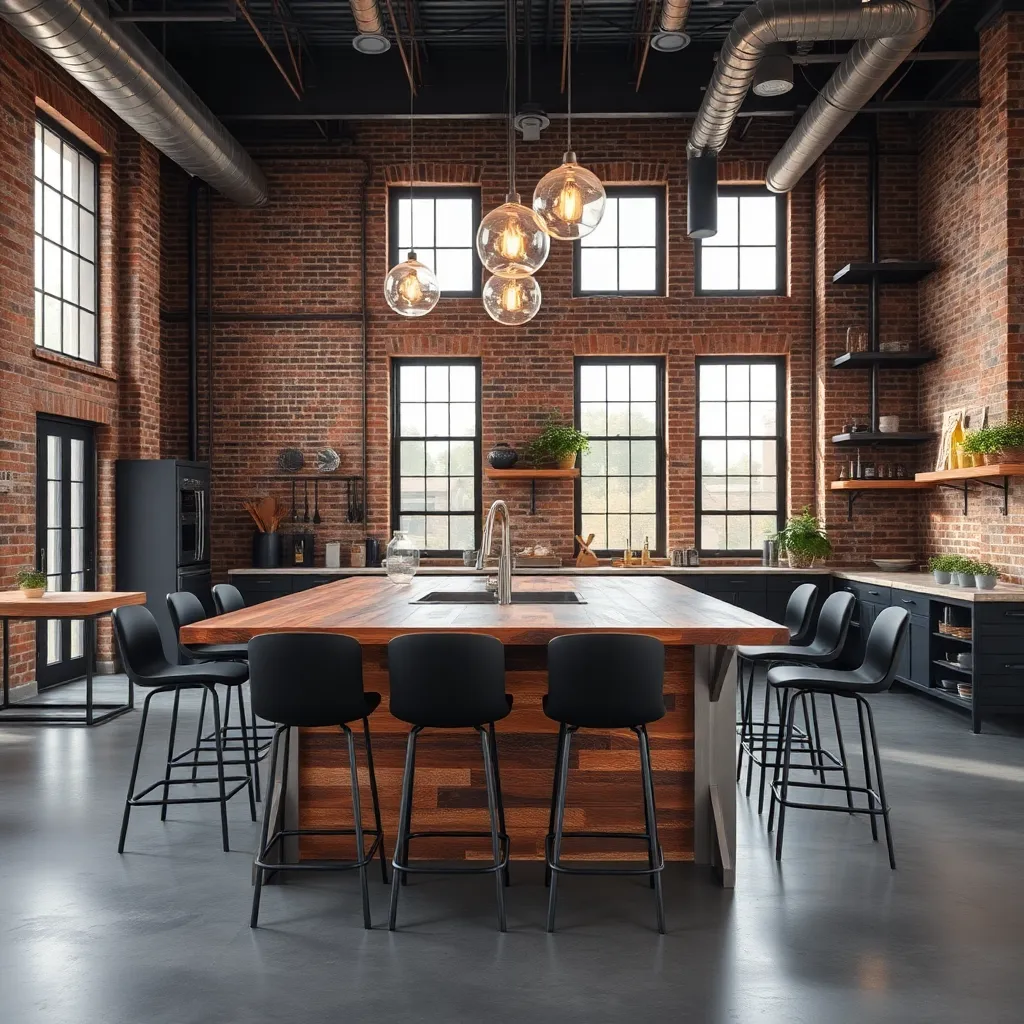Imagine walking into a kitchen that exudes a raw, unrefined charm, where the beauty lies in its functional simplicity and robust materials. Industrial kitchen designs have captured the hearts of both seasoned decorators and novices, offering a unique blend of rugged elegance and practicality. As we delve into this intriguing style, you’ll discover how to harness its bold elements and transform your kitchen into a space that marries form and function. Whether you are just beginning your design journey or refining your artistic flair, industrial kitchens offer a canvas ripe with possibilities.
At the core of industrial kitchen design is the celebration of raw materials and utilitarian beauty. This approach not only makes a statement but also embraces a philosophy of sustainability and durability. As you explore this article, you’ll learn how to skillfully incorporate elements like exposed brick, metal finishes, and reclaimed wood into your home. We’ll guide you through selecting the right textures, colors, and fixtures that embody the industrial aesthetic while ensuring your kitchen remains warm and welcoming.
For those new to this design style, fret not; industrial kitchens are surprisingly adaptable and can be tailored to any home’s unique character. Experienced decorators will find joy in the challenge of merging contemporary comforts with vintage-inspired elements. From understanding the importance of open layouts to mastering the art of minimalistic décor, this guide is packed with insights that will empower you to create a kitchen that is not only functional but also a reflection of your personal style. Join us as we uncover the secrets to crafting a space where every detail contributes to a cohesive, inviting atmosphere.
Key Elements of Industrial Style

Industrial kitchen style thrives on the use of raw materials and utilitarian components. Incorporating exposed brick walls or concrete surfaces can add a rugged, authentic charm to your cooking space.
Opt for furniture with a simple, sturdy design, like metal stools or wooden open shelving. These pieces not only enhance the industrial vibe but also provide functional benefits, ensuring durability and easy access to kitchen essentials.
Color schemes in industrial kitchens often include neutral tones such as grays, blacks, and whites, complemented by metallic accents. To add warmth and depth, consider using darker woods or copper finishes, which can soften the starkness of industrial elements.
Lighting is a crucial aspect of the industrial style, where pendant lights with metal fixtures are popular choices. Position these lights strategically over your kitchen island or dining area to create focal points and add an inviting glow.
Choosing Robust Kitchen Materials

When designing an industrial kitchen, selecting robust materials is crucial to achieving both durability and the iconic industrial look. Consider using stainless steel for countertops and appliances, as its sleek surface is not only easy to clean but also complements the industrial aesthetic with its reflective finish.
Opt for reclaimed wood for cabinetry and shelving, providing both a sustainable choice and a warm contrast to the coldness of metal surfaces. The natural wear and patina of reclaimed wood add character and authenticity to the industrial style, creating a welcoming yet edgy atmosphere.
Concrete is another excellent choice for flooring or countertops, offering both durability and a raw, unfinished look that epitomizes industrial design. To enhance its appeal, consider using concrete sealers or stains to introduce subtle color variations and protect the surface from stains and wear.
For beginners, starting with a neutral color palette of grays, blacks, and whites can set a solid foundation for an industrial kitchen. Advanced decorators might experiment with adding bold accents like oxidized metal backsplashes or copper fixtures to introduce warmth and contrast.
Incorporating Metal and Wood Accents

To seamlessly incorporate metal and wood accents in an industrial kitchen, start by selecting a color palette that complements both materials. Neutral tones like gray, black, and white provide a perfect backdrop for the rugged elegance of these elements, while hints of green or blue can add depth.
Consider using reclaimed wood for cabinetry or shelving to add warmth and texture to the space. Pair these with exposed metal brackets or handles to enhance the industrial aesthetic, creating a balance between rustic charm and modern functionality.
Incorporating furniture with a mix of metal and wood can be both practical and stylish. A dining table with a metal base and a wooden top can serve as a focal point, while metal bar stools with wooden seats offer comfort and durability.
For an advanced touch, experiment with lighting fixtures that incorporate both materials. Pendant lights made from metal with wooden accents can highlight specific areas such as the kitchen island or dining space, adding both function and style.
Maximizing Open Space Aesthetics

Open spaces in industrial kitchens are best utilized by focusing on functional layout and minimalistic design. Position large appliances strategically to create a natural flow, ensuring that cooking and preparation areas are easily accessible.
Consider using a neutral color palette with shades of gray, black, and white to enhance the spacious feel. For an advanced touch, introduce elements of contrast by incorporating bold hues in small accents, like bar stools or dishware, to add depth without overwhelming the space.
Furniture selection is crucial in maintaining an open aesthetic; opt for pieces with sleek lines and open frames to avoid visual clutter. Invest in multipurpose furniture, such as a kitchen island with built-in storage, to maximize both function and aesthetics.
Lighting plays a pivotal role in maximizing open space aesthetics. Use a combination of overhead pendant lights and under-cabinet lighting to highlight key areas, creating an inviting and well-lit environment.
Lighting Techniques for Industrial Kitchens

In industrial kitchens, lighting plays a pivotal role in enhancing functionality and aesthetics. Begin by installing track lighting to provide flexible and adjustable illumination across key work areas.
Consider using pendant lights over kitchen islands or dining areas to create a focal point that ties the room together. Opt for fixtures with a metallic finish to complement the raw materials typical of industrial designs.
An effective strategy is to incorporate layered lighting to balance ambient, task, and accent lighting. Ambient lighting can be achieved with recessed ceiling lights, while under-cabinet lighting serves as excellent task lighting for countertops.
For an advanced touch, integrate dimmable lighting systems to control the mood and brightness according to different needs. This flexibility enhances both the utility and atmosphere of the kitchen, ensuring it remains functional yet inviting.
Conclusion: Growing Success with These Plants
In exploring the intricacies of industrial kitchen designs, we’ve uncovered five key relationship concepts: the importance of open communication akin to open floor plans, the necessity of grounding your relationship with strong foundational elements, the value of mixing textures for a balanced dynamic, the power of functionality in maintaining harmony, and the beauty of embracing imperfections to foster authenticity. Each of these concepts offers a unique way to enhance your relationship, ensuring it thrives just as a well-designed kitchen does.
As a practical next step, choose one concept to focus on this week. Whether it’s setting aside time for open conversations or appreciating your partner’s unique quirks, implementing these ideas can transform your relationship dynamic. Remember, small changes can lead to significant improvements.
Don’t forget to bookmark this article as a handy reference. It will serve as a reminder of the strategies that can keep your relationship flourishing.
Looking ahead, embracing these principles can pave the way for a relationship that not only stands the test of time but thrives with creativity and strength. Empower yourself with this knowledge, and watch as your connection grows stronger.
